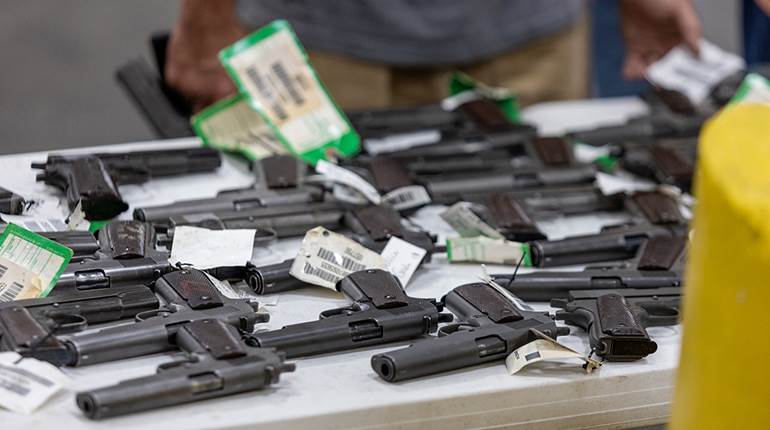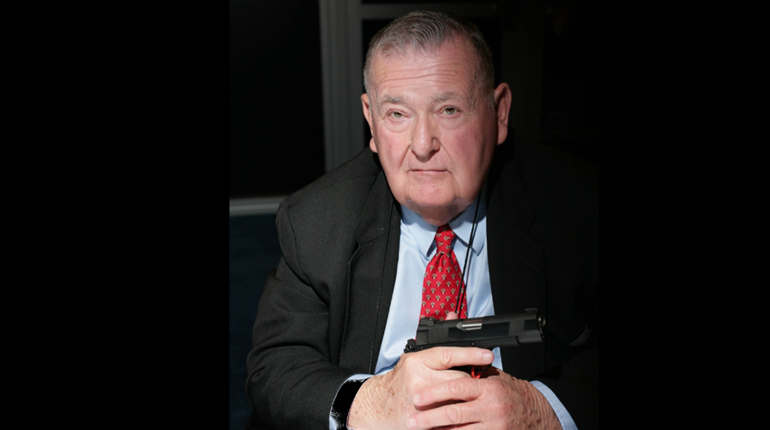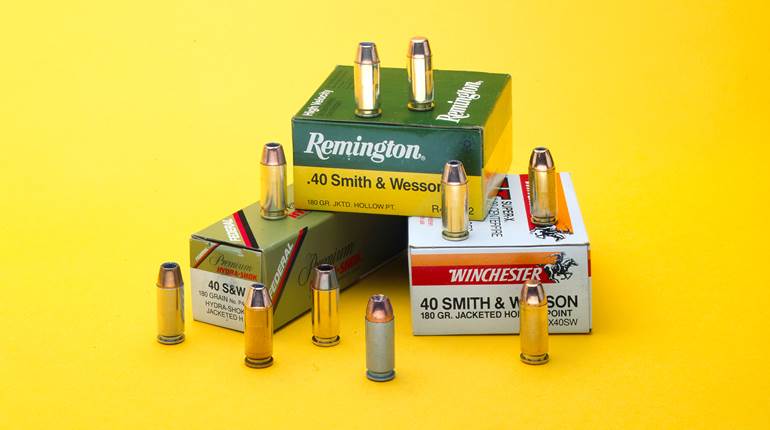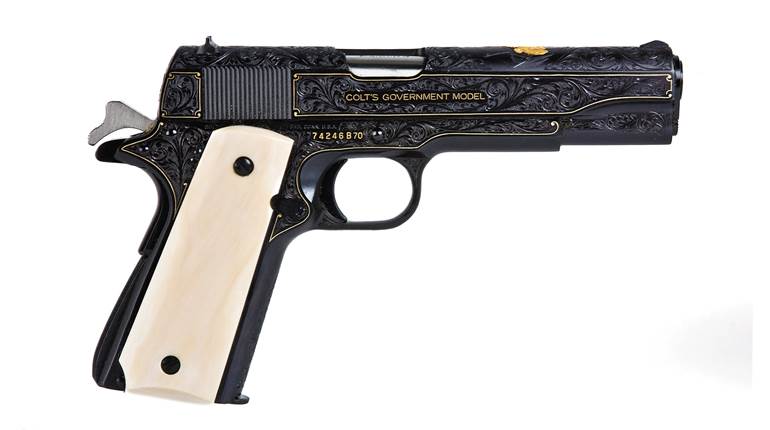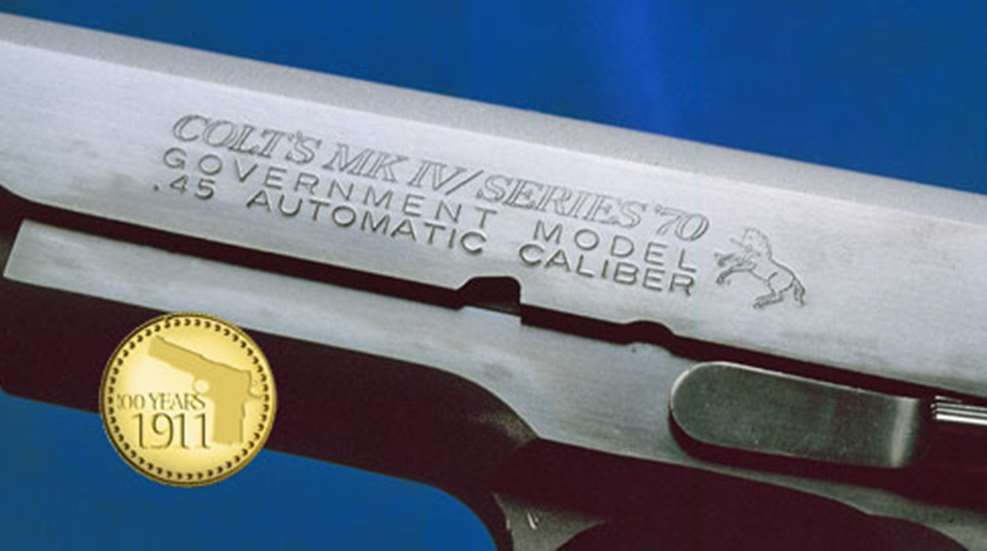
Some 95 years ago, the Army adopted the Colt-Browning .45 caliber pistol as the main service handgun of the United States. It gave the gun the official designation of “Pistol, Caliber .45 Model of 1911.” The facts of the gun’s reputation and service life are well-known to most handgunners. It is not so widely appreciated, but the .45 pistol required some modification before it was completely acceptable for most shooters. Those small changes were made in the mid-1920s—after the practical experiences of World War I—and caused a change in the official nomenclature to “Pistol, Caliber .45 Model of 1911A1.”
It is this latter model that is best known to most living veterans. It is also the A1 variant that comprises the bulk of the production, by now in the millions, of 1911 pistols. Many designers have attempted to make the 1911 more acceptable to civilian handgunners, particularly in the last 15 to 20 years. The 1911A1 pistol is in the midst of a renaissance of sorts, but if you want a pure version of what came out of WWI, you must go back to where it all began. And that is to Hartford, Conn., and Colt. In Colt’s currently produced Series 70 .45 pistol, you have a handgun that is very close to duplicating the guns that came from the old factory under the blue dome in 1924. Sure, there are differences in the degree and quality of hand finishing, upgrades in metallurgy and changes in markings, but the product has the same features as the 1924 guns of the A1 style.
To begin an examination of the Series 70 guns, we need to fill in a bit of the background that led up to the design of the original 1911A1 pistols. They were an upgrade of the original 1911 pistols. Army Ordnance took all of the comments made by combat users of the 1911 in the years following WWI and went after corrections. Everybody seemed pleased with the pistol’s power and accuracy, but many felt that the gun was too big, had an excessive trigger reach and even pointed low. There really wasn’t a great deal they could do to make the gun smaller, but the other problems were correctable to some degree. For one thing, the Ordnance people shortened the trigger. Instead of the old, smooth-faced long trigger, they cut it back by about a quarter inch, which suited small-handed shooters much better and was still usable by the big guys. They got a little more improvement by cutting a crescent-shaped relief on each side of the frame at the rear edge of the trigger guard. This shortened the distance to the trigger. They also applied a checkered surface to the trigger face.
The pointability question was resolved by installing a completely new mainspring housing at the lower rear corner of the butt, which was arched, with more material added. This gave the shooting hand greater bearing surface, causing an admittedly muzzle-heavy pistol to angle upward. This change overcame the tendency of the gun to shoot low, particularly in close range encounters at high speed. A final modification addressed the problem of the 1911’s nasty tendency to bite the shooter’s hand. On the original 1911s, the grip safety tang was too short. This caused the fleshy web of the shooter’s hand to override it and thereby exposed the hand to a nasty bite from the spur of a fast-moving hammer. The solution was pretty simple—lengthen the tang and shorten the spur.
Beginning in 1924, the changes were incorporated on both GI and commercial pistols and continue to present day. In the early 1970s, Colt introduced a new variation of the 1911A1 pistol. This was the Series 70 Model, which incorporated a major change calculated to improve accuracy. It was a collet style barrel bushing with four flexible fingers that centered the barrel perfectly in relation to the slide. It worked very well, but the increasingly powerful ammunition developed in this same period was hard on the system and the factory had severe warranty problems when one or more of the fingers broke. With little fanfare, Colt dropped the collet bushing, leaving the Series 70 pistol different from the plain M1911A1 in nothing but markings.
Then came the Series 80, the major feature of which was a trigger-activated firing pin safety. Certain states were mandating drop safeties to prevent dropped-gun accidental discharges. Colt responded with a clever safety that drew off a bit of the trigger pressure to elevate a plunger in the slide that cleared a path for the forward movement of the firing pin. I have had considerable experience with several guns of this type. There’s not much doubt that they have an adverse impact on the traditional Colt trigger pull. However, the impact is not unbearable, particularly if a competent pistolsmith touches it up. Despite these facts, the firing pin safety was something that was—and still is—heavily criticized more often than not. Most of the new brands of 1911 pistols have some form of them. To avoid the Series 80 safety, most shooters started looking for a good Series 70 or earlier pistol, since Colt had dropped them with introduction of the 80 Series.
Afterward, a new administration at Colt, headed by gun-wise Bill Keys was willing to listen to the Gunsite staff. The Arizona shooting school wanted a gun with their features and without the firing pin safety. In time, Colt decided to not only make the Gunsite pistols but also to produce certain models of the Series 70 once again. Presently, the catalog includes both Series 70 and Series 80 guns, along with some specials like the WWI Commemoratives, Gold Cups and some other variations. The key to passing a drop test without using the controversial firing pin safety is simply a light firing pin and a bit stronger firing pin spring. A pistol thus equipped will not fire even if dropped from a significant height. In effect, the return to the pre-Series 80 system at Colt is a return to the Series 70 style guns and earlier M1911A1s.
Picking up the Series 70 .45 ACP Government Model is like déjà vu all over again. This is the shape, heft and balance of the service pistol with which I was armed for all of my military service. In recent years, I have used many different types of .45s, almost all of which were equipped with long triggers and flat mainspring housings. They are better for the Weaver stance shooting that takes up most of my range time. Still this was the configuration of the pistol that served the Republic so admirably for so long.
My sample Series 70 had an unusual version of the arched mainspring housing. Most of the ones made by Colt and the other Government contractors of WWII—Ithaca, Remington Rand, etc.—had serrations running parallel with the long axis of the butt. This new Colt version is checkered in what appears to be a 25-lpi pattern. It looks nice and serves to anchor the butt solidly in the palm of your hand. I can’t recall that I ever saw an arched housing that was checkered. The pistol also has a typical slender grip safety, as used on the GI and commercial pistols. Shooter complaints about hammer bite did not completely stop with the introduction of this modification in 1924. This fact caused custom designers (Charlie Kelsey was the first) to develop beavertail grip safeties in the early days of IPSC shooting.
On the sample, the trigger is of the short type that was initiated in the 1924 redesign. It is certainly correct in the historical sense, but I would have to replace it if I were using this gun for regular shooting. I have to bend my trigger finger at an angle in order to get it across the face of the trigger with the proper orientation to pull straight back. Fortunately, the Brownell’s catalog is full of replacement triggers of many different lengths and shapes. And nobody was ever reluctant to change the details of their M1911 pistol—the most customized firearm in history.
There is no need to change one feature of the sample gun, although it was once a feature that is very commonly changed. For most of the life of the 1911 pistol, it was cursed by sights that are simply too small to see. That is no longer true. The current Series 70 guns come with a large rear sight that stands well above the slide. Best of all, the sight has a full eighth of an inch notch that aligns with a sort of semi-ramp front sight. The actual sight picture is large and easy to both find and align. This may be the single best improvement that Colt has made to the Government Model pistol in 95 years.
The sample gun came with a handsome set of rosewood grips, checkered in the classic double diamond pattern. This pattern was used on the very first 1911 pistols and was abandoned in 1924. Colt has brought it back as a welcome reflection of the gun’s long history. The fit and finish of the new gun is good, but probably not as good as was offered in the halcyon days of yesteryear. However, the polished flats of the slide are very nicely executed and the overall finish is excellent. Happily enough, Colt still uses plain old-fashioned bluing as a finish, as opposed to the paints or ceramics of their competitors.
I went to the range with the new gun and an assortment of ammunition. This is the fun part of a gun evaluation, with lots of tin can rolling and dirt-clod busting. The new Series 70 has the old familiar balance, the typically heavy trigger pull and the common recoil and muzzle rise. I wouldn’t expect anything else, but enjoyed working my way through a dozen or so magazines of mixed loads. No malfunctions or problems noted. Then it was time to get serious about an accuracy check with the Ransom Rest. Results show a new pistol with an excellent accuracy potential—on the average, 2.34 inches. Best groups were fired with Hornady 200-grain TAP ammo measuring 1.17 inches. This is very good accuracy for a box stock pistol with no tuning.
Colt .45 autos are often the basis for advanced custom pistols and my information is that they would be used more often than they are if the price tag were not so high. A Colt is still the best foundation for a fine tactical or competition gun. But this one is also something else. It is a refection of the history of both gun and gunmaker. This is as close as possible to the old guns, made in the “way they used to make ‘em.” In that light, the gun can be simply left as is, but still used and fired often. It is a new example of the best fighting handgun of all time—the .45 Government Model—as made by Colt’s of Hartford.
Manufacturer: Colt’s Manufacturing Co., Coltsmfg.com
Caliber: .45 ACP
Action: Recoil-operated single-action semi auto
Frame: Carbon steel
Slide: Carbon Steel
Barrel: 5 inches
Rifling: 6 grooves, LH, 1:16
Magazine: 7 rounds
Sights: Drift-adjustable rear, ramp front
Trigger Pull: 4 lbs., 9 ounces (average)
Overall Length: 8.5 inches
Width: 1.25 inches
Height: 5.75 inches
Weight: 39 ounces
Accessories: Lockable hard case, manual
Suggested Retail Price: $1,100












